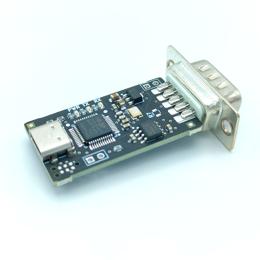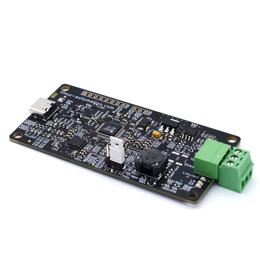Blog
Pengutronix: Rückblick auf 2023 - Teil I
Wieder ist ein spannendes aber auch herausforderndes Jahr vorüber, wir sind ein Jahr näher am Y2038-Problem, OpenSSL 1.1.1 ist endgültig Geschichte, Kernel v4.14 von 2017 wird in vier Wochen endlich abgekündigt, kommende LTS-Kernel nur noch 2 Jahre unterstützt. Die Relevanz von Linux, nicht nur im Embedded-Segment, steigt ungemein, gleichzeitig steht die (Open Source) Software-Welt in Europa vor notwendigen aber auch herausfordernden Umbrüchen, die in Form des Cyber Resilience Acts ihre Schatten voraus werfen.
RAUC v1.11 Released
Ho Ho ho! As the year's progress bar approaches 99%, another update is already completed: RAUC v1.11 is here!
Was ist neu in Weston 13?
Vergangenen Dienstag wurde Weston 13.0 released. Der Release enthält einige neue Features, die wir für unsere Anwendungsfälle in Embedded Systems entwickelt und nach Upstream gebracht haben. In diesem Blogpost wollen wir die für uns relevanten neuen Features — Multi-Backend, OpenGL Renderer für die PipeWire und VNC Backends, und Überlappende Outputs — erläutern und zeigen, wieso diese für Embedded wichtig sind.
[Podcast] Kernel Panic - Board on Fire ~~> #008: Aus dem Takt - Das Doppelpack Clock-Glitches
In dieser Folge reden Ahmad und Leonard über Takte / Clocks in Prozessoren. Darüber warum es so viele gibt, wie sie erzeugt und im Chip verteilt werden und darüber, was dabei eigentlich so schief gehen kann.
umpf - Git on a New Level
Moderne Softwareentwicklung ohne begleitende Versionsverwaltung wie Git ist heutzutage unvorstellbar - Änderungen am Quellcode sollen schließlich nachvollziehbar dokumentiert und beliebige Verssionsstände jederzeit einfach reproduziert werden können. Für Arbeiten an komplexeren Projekten wie etwa dem BSP ("Board Support Package") eines eingebetteten Systems mit mehreren Entwicklungssträngen skaliert ein bloßes Aufeinanderstapeln der einzelnen Änderungen jedoch nicht.
[Podcast] Kernel Panic - Board on Fire ~~> #007: GPU und nu? Der Weg zum offenen Grafiktreiber
In dieser Folge erzählt Lucas Stach uns wie er in die Entwicklung der offenen Grafiktreiber Nouveau und Etnaviv hineingeraten ist und was so ein Grafiktreiber eigentlich tut. Wir reden darüber warum Grafikkarten überhaupt Software ausführen und wie diese Software von der Anwendung bis in die Grafikkarte kommt.
candleLight FD - Open Hardware USB-to-CAN-FD interface
This week Linux Automation has released a CAN-FD version of the low-cost USB-to-CAN interface candleLight: the candleLight FD. And as the candleLight the candleLight FD is Open Hardware. Check the KiCad project on Github.
LXA USB-T1L ❤️ Beagle Play: Exploring Single Wire Ethernet
It seems everybody is talking about Single Pair Ethernet (SPE) these days. So we want to follow the trend and do the same :-) SPE is a class of Ethernet transmission standards that uses just a single pair of twisted pair cable for data transmission. There are multiple SPE variants spanning maximum data rates from a hand full MBit/s to multiple GBit/s and cable lengths from a hand full of meters to kilometers. The most interesting ones from our embedded-centric point of view are 10Base-T1L (point-to-point, up to 1 km), 10Base-T1S (multidrop, approx. 10 m) and 100Base-T1 (point-to-point, 15 m). The new Beagle Play comes with a 10Base-T1L PHY. This makes it a great peer to experiment with our Linux Automation USB-T1L. In this post we will explore the possibilities of 10Base-T1L on a recent Linux system.
FrOSCon 2023
In ein paar Stunden beginnt die 18. FrOSCon an der Hochschule Bonn-Rhein-Sieg. Pengutronix ist wieder mit einem kleinen Team vor Ort. An einem der Partner-Stände zeigen wir wieder einige unserer Aktivitäten in der Open Source Community. Dafür bringen wir unseren labgrid Demonstrator und die FPGA Demo mit.
[Podcast] Kernel Panic - Board on Fire ~~> #006: Der Browser im Fahrkartenautomaten - Webtechnologie trifft Embedded-GUIs
In dieser Folge erzählt Bastian Krause uns warum man öfter als man vielleicht denkt Webbrowser auf Embeddedgeräten vorfindet und was die verwendeten Browser von normalen Desktopbrowsern unterscheidet. Außerdem reden wir über Browserengines im Allgemeinen und auch ein bisschen über automatisiertes Testing von Webapplikationen.











